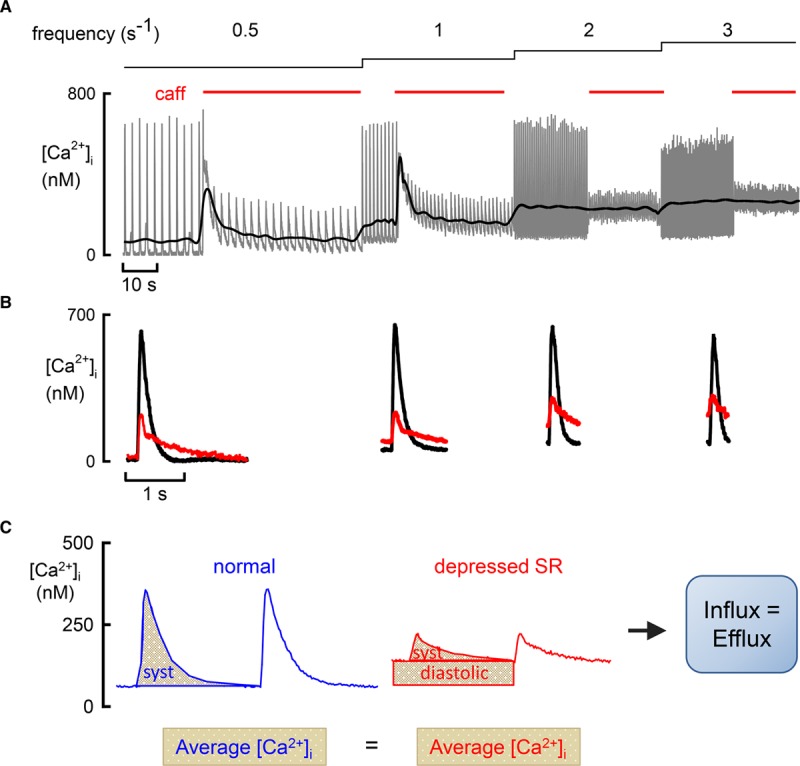Figure 2.

The importance of average intracellular Ca2+ concentration ([Ca2+]i) in the control of systolic (syst) and diastolic [Ca2+]i. A, The effects of application of caffeine (caff) and stimulation rate on [Ca2+]i. A rat ventricular myocyte was stimulated at the frequencies shown above and caff (1 mmol/L) applied for the periods denoted by the red bars. The gray trace is the original data and the black denotes average [Ca2+]i. B, Specimen, averaged traces of [Ca2+]i from the frequencies shown above. For each frequency, the control (black) and caff (red) traces are superimposed. Data reproduced from Sankaranarayanan et al.14 C, Illustration of flux balance in control and with depressed sarcoplasmic reticulum (SR) function. The total Ca2+ efflux via sodium-calcium exchange (NCX) above control diastolic levels is represented by the area under the [Ca2+]i trace. In the depressed SR case, this is separated into 2 components: (1) activated by the syst Ca2+ transient and (2) activated by increased diastolic [Ca2+]i. Average [Ca2+]i is identical with normal and depressed SR (A), and, therefore, Ca2+ efflux is unchanged and equal to influx.
